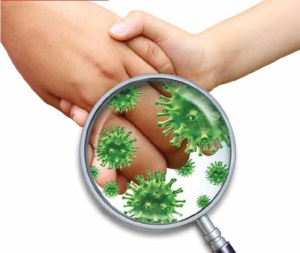by
Gus Iversen, Editor in Chief | October 13, 2014
From the August 2014 issue of HealthCare Business News magazine
In health care today there are few, if any, tenets as impervious to overstatement as the importance of cleanliness. Our ancestors in Mesopotamia were washing wounds with alcohol 4000 years ago, but the real gravity of sanitation didn’t start to resonate until about 150 years ago, when the work of Louis Pasteur led surgeons towards new concepts like wearing gloves and disinfecting their instruments. Today, the mission is clear: to practice medicine in the cleanest environment possible.
Failing that mission comes at a hefty cost. Annually in the U.S., it’s estimated that 1.7 million health care-acquired infections (HAIs) are responsible for nearly 100,000 fatalities, with direct costs as high as $45 billion. That makes HAIs one of the leading causes of death in the country. According to the Center for Disease Control, implementing a comprehensive HAI prevention strategy can generate a 70 percent reduction in HAIs, and estimated savings of $25 to $31.5 billion.
The health care industry appears to be at something of a tipping-point in the fight against infectious disease. Newly developed air purifying systems are trapping and killing pathogens in the operating room (OR), socalled “germ zapping robots” are utilizing ultraviolet (UV) rays to decontaminate facility surfaces, and lab coats and scrubs are being impregnated with antimicrobial compounds to help reduce the amount of bacteria riding coattails towards new hosts. All of these improvements have big potential for HAI reduction, but germs are not pushovers. As clinicians break ground in sanitation, bacterium — such as the antibiotic resistant “superbug,” MRSA— find new ways to resist extermination.
Taking matters into their own hands
In 2010, the American Society of Microbiology and the American Cleaning Institute determined that people are more likely to wash their hands in a public restroom than they are in a hospital. In addition, research by The Joint Commission on Accreditation of Healthcare found that national compliance with recommended hand-hygiene guidelines is only about 48 percent. Some hospitals inadvertently report inaccurate and overinflated compliance due to The Hawthorne Effect, a phenomenon in which special attention results in unrepresentative compliance in sample group monitoring. Such was the case in 2012 for Sentara Healthcare, and it prompted them to overhaul the culture of hand-washing in their facilities.
Sentara’s experiments yielded some surprising discoveries. Installing hand sanitizer stations at bedsides, (as opposed to outside the room) did not improve compliance, and peer coaching actually reduced compliance. Things that worked included quizzes initiated by staff leaders and encouraging patients to question physicians and nurses about their hands. Red signs posted throughout hospitals reminded people to wash up, computer screen-savers emphasized cleanliness, and Hero of the Month awards were given to the best hand-washers. When the study concluded, American Medical News reported Sentara’s hand-washing compliance rate had gone from 50 percent to 92.5 percent.
